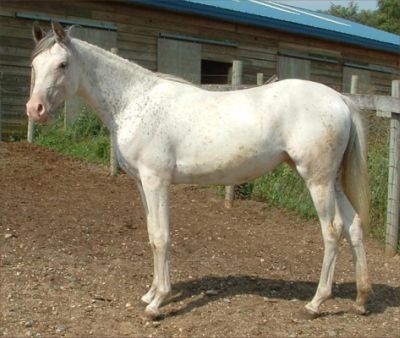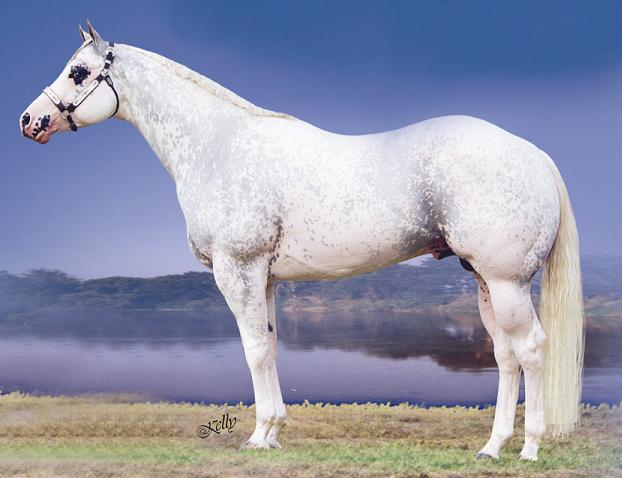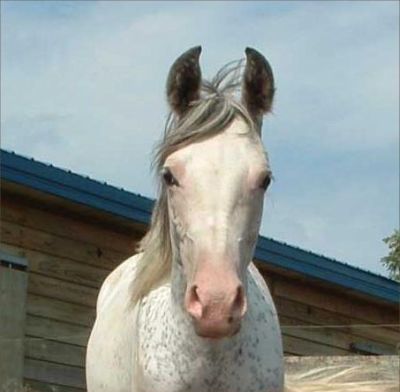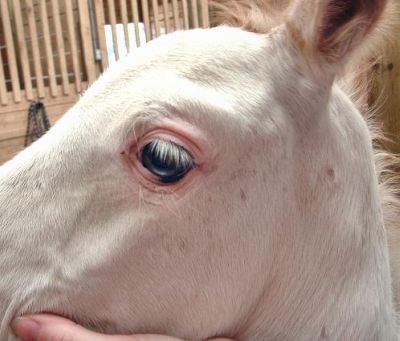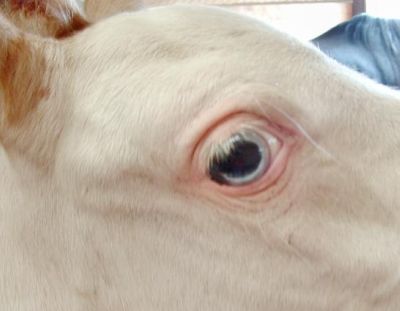Should dominant white be considered as sabino white?
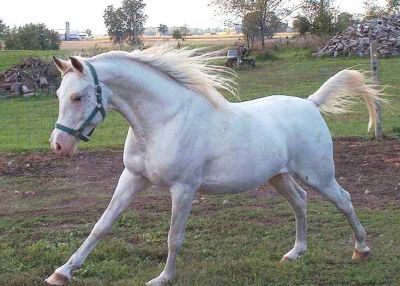 Both the dominant white alleles and the
sabino-1
allele are variants of the same gene, the KIT gene. That is to say sabino-1 and dominant white could be considered allelic. The true roan allele (or possibly alleles) is (are) also allelic. Tobiano too occurs in the region, probably affecting the regulation of KIT rather than the KIT product itself. Both the dominant white alleles and the
sabino-1
allele are variants of the same gene, the KIT gene. That is to say sabino-1 and dominant white could be considered allelic. The true roan allele (or possibly alleles) is (are) also allelic. Tobiano too occurs in the region, probably affecting the regulation of KIT rather than the KIT product itself. That is not, of course, to say that sabino-1 and white don't have distinctions at the phenotypic and genetic levels. The white mutations result in KIT proteins with extensive pieces missing or dysfunctional, sometimes the majority of the protein. Such proteins are dysfunctional, so that heterozygous individuals produce functional protein from only the wild type allele, and therefore have less of it than non-white horses. Homozygous individuals do not have working KIT protein, and by analogy with other animals, and considering the known functions of KIT, are predicted to be inviable (homozygous lethality).
There is a good argument for there to be a single gene symbol for truly allelic traits. In this case sabino seems a better choice than white, which could be considered an extremity of the sabino phenotype. There indeed seems to be a series within KIT ranging from a little white (sabino) to near complete white. We could give them both the sabino symbol. Where, though, does that put roan? Who is for giving that a sabino symbol too? (Oooh, I can hear the cries of protest beginning to ring out already... hold the hate-mail, I'm just trying to illustrate the issues involved!)
As with other genes (like extension) we could use the same gene symbol but name the alleles by phenotype, to give some clarity. If there turns out to be an unusually high number of alleles previously considered non-allelic I suspect there would be some confusion anyway. One could imagine that the "sabino" series might end up including roan alleles, and possibly even some of the appaloosa alleles too (I've heard breeders suggest it for snowcap, varnish and snowflake). As a colleague pointed out to me, the mouse geneticists already report DNA and breeders symbols side by side, but breeders nomenclature is not automatically replaced because of its usage: it's what people understand now. However in this case when we do think in terms of KIT DNA nomenclature the sabino/dominant white debate does not seem so significant: alleles for the KIT gene cause a range of pattern types, for which there are well established names for the phenotypes.
Given the multi-allelic nature of white I suspect that some white horses give only white or solid coloured foals, if not bred to a mate of pattern. Perhaps others with different alleles may also have less marked sabino foals. There is even the possibility of horses with both sabino and white alleles simultaneously, although probably not in linkage (that is to say one allele on the maternal chromosome and one on the paternal chromosome, one imagines that linkage of the two might just give an allele that acts as a white allele). Old King, the founder of the American White Horse was reported to have 50% coloured and 50% white foals. One should not be surprised by this as owners of white mares usually choose white stallions (if white is their "thing") on a basis other than genotype. Such white horses might have sabino foals.
|
Different dominant white mutations occur in different breeds and lines






